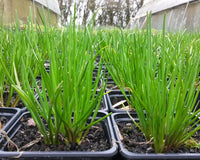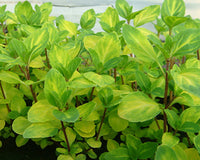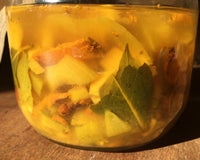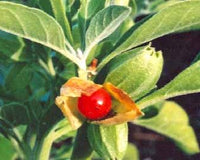Tasty wild garlic (allium ursinum) is always one of the early stars of spring, with its pungent leaves, and pretty white flowers, both of which are edible. It naturally grows in woodland and carpets the ground under trees giving a heady scent of garlic to the air. Although it likes shady damp woodlands, it doesn’t like to be sat in wet soils. Woodlands are often reasonably dry as the trees suck a lot of moisture from the ground and wild garlic grows best in the wetter areas of the UK where it gets plenty of water but isn’t sat around in it for too long. Woodlands in drier areas like the South East have much less wild garlic growing in them as there is much less rain fall and the soils are too dry.
Wild garlic is a hardy perennial and after shooting up early in spring, tends to die back by mid-summer. It can be grown from seed or from the bulbs (also edible) or bought as a growing plant. It survives very well in a pot in the garden, just remember to water it regularly during dry spells, give it plenty of shade and a feed every month or so. A patch can be established in the garden, especially if you have a spot under trees – watch out if you have its favourite conditions as it has the ability to spread where you don’t want it.
Use wild garlic in all sorts of cooking – there are no rules, you can experiment. It isn’t as potent as the usual garlic bulbs – but tasty all the same.
Try this little potato accompaniment;

- Boil potatoes and pure in a food processor with butter and a smidgen of cream until silky smooth.
- When cooled a bit, add chopped wild garlic leaves – the more you add the stronger the flavour.
- Place into a piping bag with either no nozzle or a wide one and pipe into pyiamids onto a greased baking sheet.
- Cook in a hot oven until browned.
This can be served instead of mashed potatoes.






